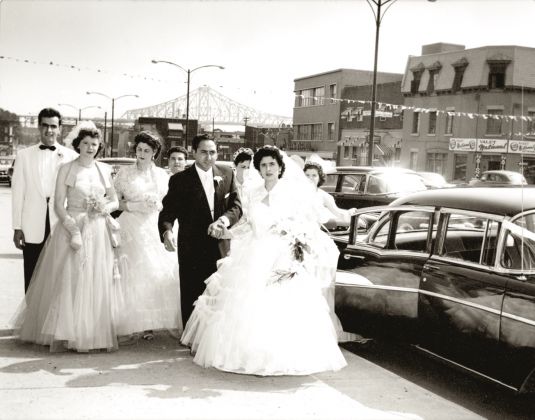The actual moment when the Italian immigration to Canada began is a hotly debated topic. Some consider the landing of Giovanni Caboto somewhere in modern-day Newfoundland and Nova Scotia in 1497 as the very first evidence of the Italian presence on Canadian soil. Others refer to such historical facts as the arrival of Piedmontese soldiers in New France with French settlers in 1665. Few know that Italian soldiers fought alongside the French against the English in the fateful Battle of the Plains of Abraham near Quebec City in 1759, many choosing to remain in Canada after the hostilities ended.
The modern Italian mass-immigration phenomenon, characterized by two great waves, began in earnest in the late 1800s. The pre-World War I wave saw Italian peasants leave their poverty-stricken homeland for the employment opportunities that the New World offered. The post-World War II wave was composed of people fleeing the appalling social and economic conditions of a war-ravaged country. From a mere 2000 “colonists” in Montreal in 1885, the Italian community today counts approximately 1.2 million people across Canada. With the flow of immigrants from Italy ebbing considerably by the 1970s and as the protagonists of these events age and pass on, the significance of such a mass migratory movement slowly fades from memory and transforms itself into history.
On March 27, 2003, after two years of preparation, the National Congress of Italian Canadians (Quebec Region) enthusiastically launched the Italian Canadian Community Archives of Quebec. The Archives will officially preserve the Italian immigration epic and ensure that this aspect of Canadian history, increasingly a topic of inquiry among historians and other researchers, will be consolidated and promoted.
Supported by a $46,400 grant from the Quebec government, the Archives will be a unique source of information on the subject of the Italian presence in Canada – detailing the community’s struggles and setbacks, as well as its accomplishments and contributions. The implementation of the project will be overseen by an advisory and planning committee , assisted by Concordia University Archives Director Nancy Marrelli.
The Archives will begin by classifying some 21 linear metres of material culled by the NCIC (QR) over the past several decades. The archival material is in a variety of formats: newspapers, magazines, pamphlets, books, photographs, architectural plans, sound recordings, film and video – in English, French, Italian and in numerous Italian dialects. The Archives will also invite Italian Canadian associations, organizations, institutions, media outlets and individuals to donate their archival material, with the objective of making the Archives as comprehensive as possible.
From documents relating the consecration of the first Italian parish in Canada, Madonna Del Carmine in Montreal in 1907, to the internment of hundreds of innocent Italian Canadian civilians during World War II to oral histories recounting the trans-Atlantic voyage in the 1950s and 1960s, the Archives will secure the permanent guardianship of records of historical value to the Italian Canadian community, and will be a source of programs to inform Canadians about the Italian Canadian heritage and history. Accessible to the public, individuals and organizations alike will be able to carry out research on the history, culture and legacy of the Italian community in Quebec.
The significance of the Archives lies in its role of teaching present and future generations of Canadians about their community and their heritage. The majority of Italian immigrants came to Canada as unskilled labourers with little education. Today, the Italian community is well entrenched in all aspects of Canadian life, contributing in tangible ways and allowing Canada to flourish into an exemplary multicultural society.
Pietro Gasparrini is founder and chairperson of the Archives Planning and Advisory Committee for the National Congress of Italian Canadians (Quebec Region).
First published in Accenti Magazine, Issue 2.



